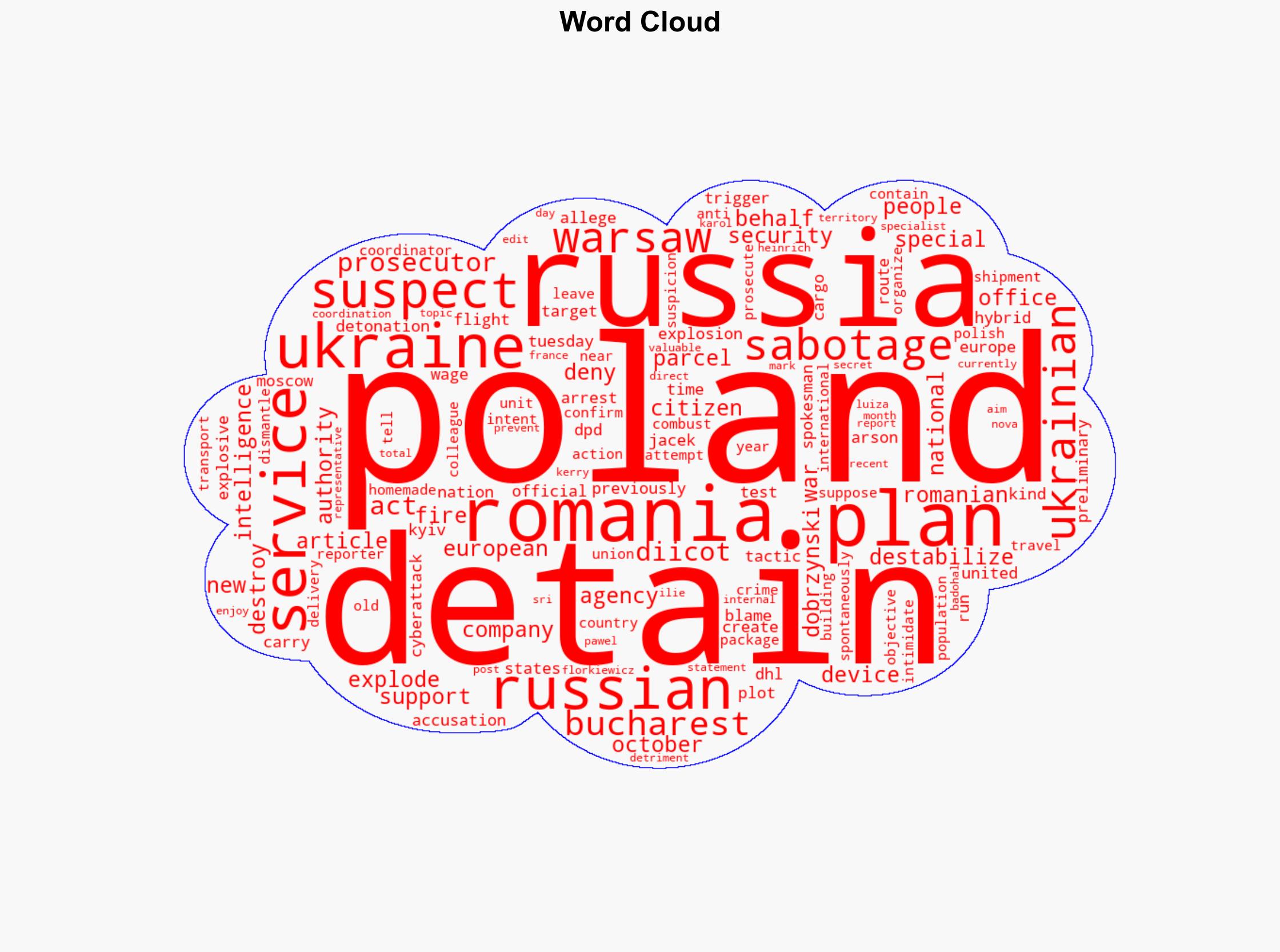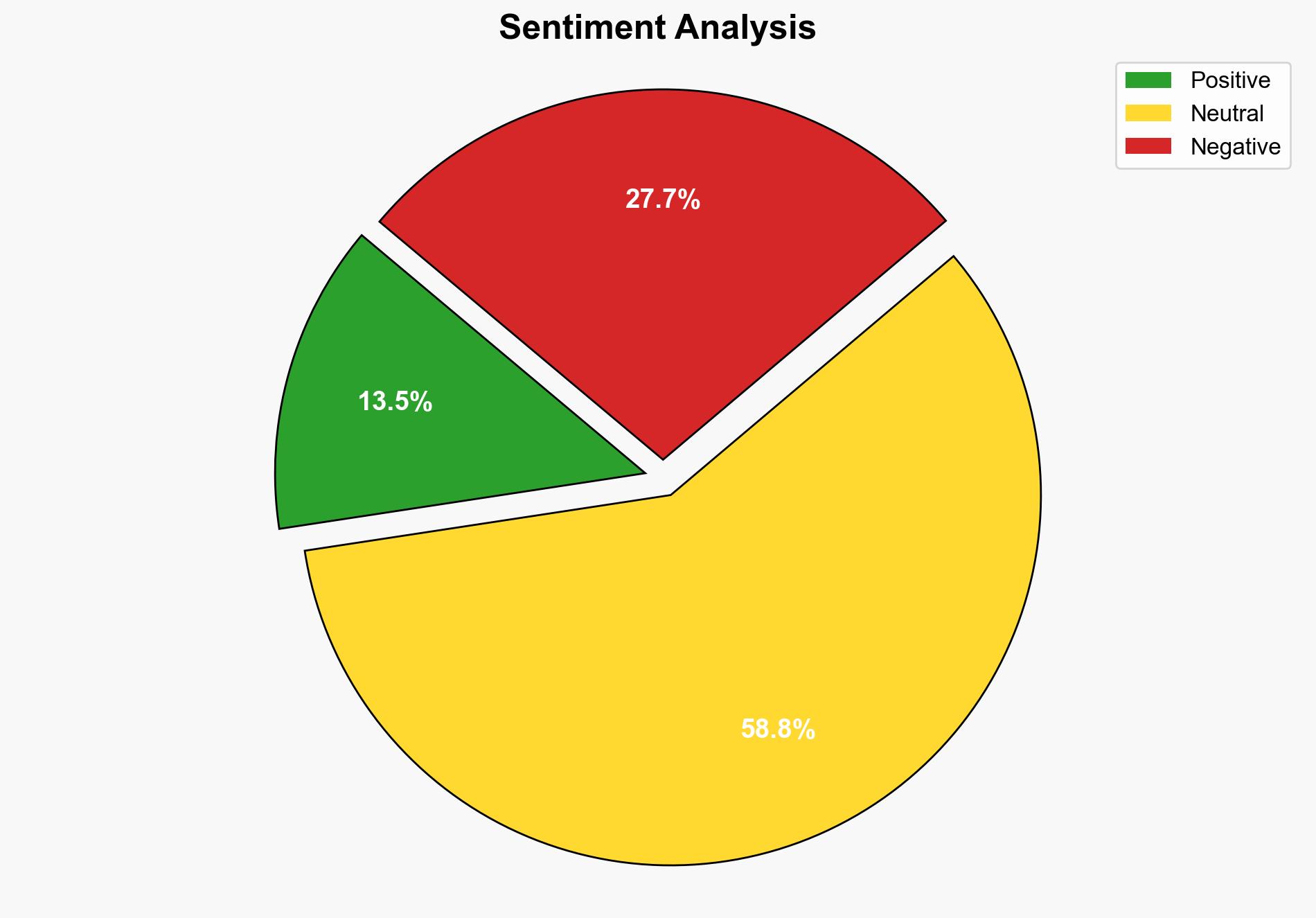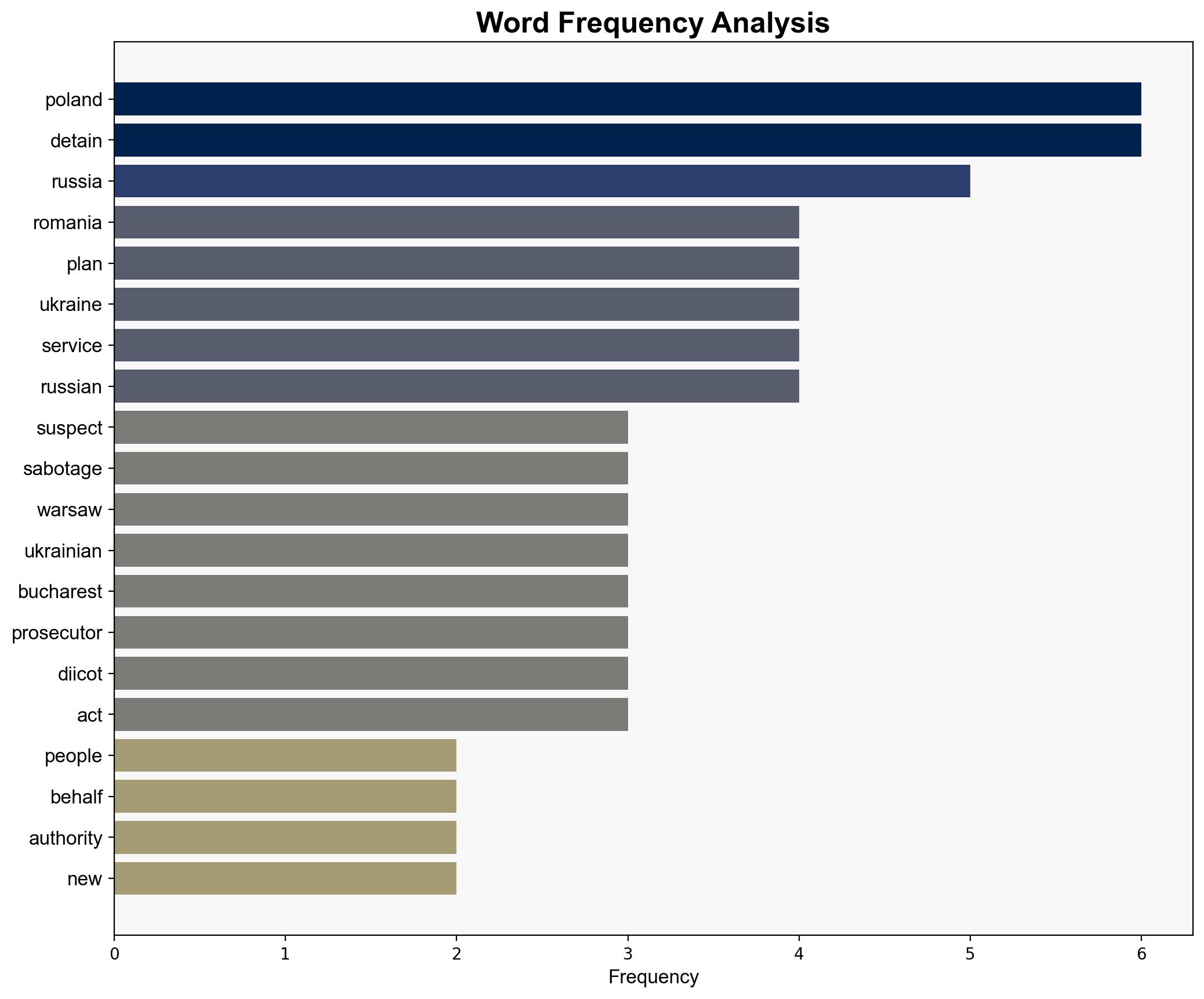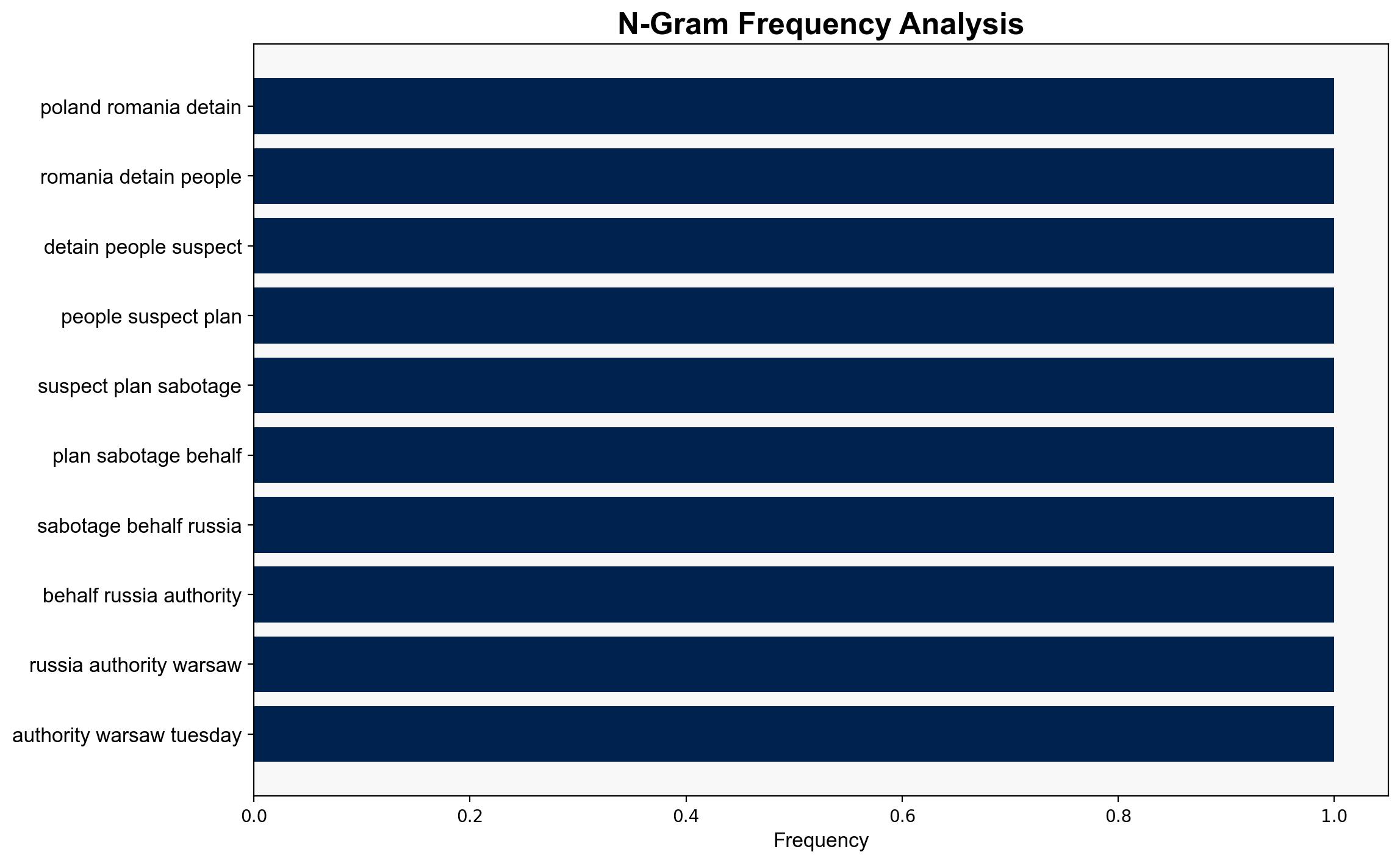Poland Romania Foil Russian Exploding Parcels Plot Warsaw Says – Insurance Journal
Published on: 2025-10-21
Intelligence Report: Poland Romania Foil Russian Exploding Parcels Plot Warsaw Says – Insurance Journal
1. BLUF (Bottom Line Up Front)
The most supported hypothesis is that the plot involving exploding parcels was orchestrated by individuals acting on behalf of Russian interests to destabilize European countries supporting Ukraine. This conclusion is drawn with moderate confidence due to corroborative intelligence from multiple sources and the involvement of national security agencies. Recommended actions include enhancing regional intelligence sharing and bolstering counter-sabotage measures.
2. Competing Hypotheses
1. **Hypothesis 1**: The plot was a coordinated effort by Russian intelligence to destabilize European nations supporting Ukraine by using sabotage tactics, including exploding parcels.
2. **Hypothesis 2**: The plot was an independent operation by rogue actors with no direct connection to Russian state interests, possibly aiming to create chaos for personal or ideological reasons.
Using the Analysis of Competing Hypotheses (ACH) 2.0, Hypothesis 1 is better supported due to the involvement of Ukrainian and Romanian nationals reportedly in coordination with Russian secret services, as well as historical patterns of hybrid warfare tactics attributed to Russia.
3. Key Assumptions and Red Flags
– **Assumptions**: It is assumed that the detained individuals had direct links to Russian intelligence, based on statements from Polish and Romanian authorities.
– **Red Flags**: The denial from Moscow and lack of direct evidence linking the Russian state to the plot raise questions about the conclusiveness of the intelligence.
– **Blind Spots**: Potential over-reliance on statements from involved national agencies without independent verification could bias the analysis.
4. Implications and Strategic Risks
The plot, if successful, could have led to significant destabilization within the EU, affecting economic stability and public confidence in security measures. There is a risk of escalation in hybrid warfare tactics, potentially involving cyberattacks or further sabotage attempts. The psychological impact on the population could increase support for more stringent security measures, potentially affecting civil liberties.
5. Recommendations and Outlook
- Enhance intelligence-sharing frameworks among EU nations to improve early detection of similar plots.
- Strengthen counter-sabotage and cybersecurity measures to mitigate future risks.
- Scenario Projections:
- **Best Case**: Improved regional cooperation prevents future plots, enhancing security and stability.
- **Worst Case**: Escalation of hybrid warfare tactics leads to significant destabilization and economic impact.
- **Most Likely**: Continued attempts at destabilization, met with increased vigilance and countermeasures.
6. Key Individuals and Entities
– Jacek Dobrzyński
– Pawel Florkiewicz
– Karol Badohal
– Luiza Ilie
– Kerry Mark Heinrich
7. Thematic Tags
national security threats, cybersecurity, counter-terrorism, regional focus




